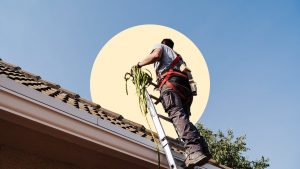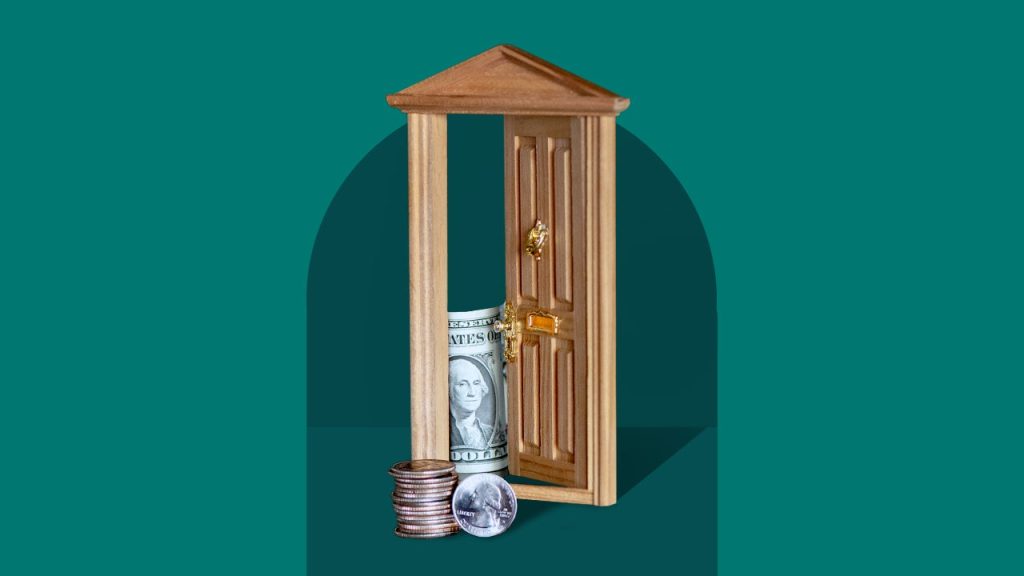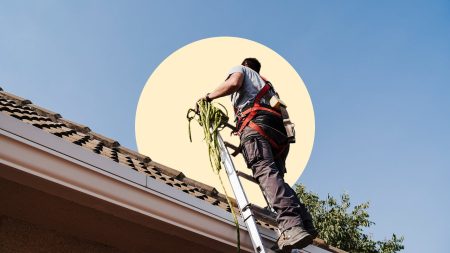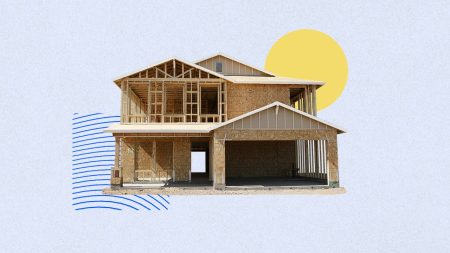If you’ve recently tapped your home for cash, you are not alone.
Both home equity lines of credit (HELOCs) and home equity loans are up in numbers, their originations rising in Q3 2024 by 6 and 8 percent, respectively. HELOC balances are bigger, too: They climbed in Q4 of last year, marking the 11th quarter in a row of growth.
Clearly, home equity lending is having a moment. But why? One key reason: Rates for HELOCs and home equity loans have been falling since the beginning of 2024, while mortgage rates and other interest rates have remained stubbornly high. This phenomenon has made borrowing against one’s homeownership stake better than alternatives like mortgage refis or personal loans. That’s especially true if the need for cash relates to home remodeling, renovation or repair (the leading reasons people tap their home equity).
Another key factor is the average equity we have in our homes, which is near record levels.
Let’s look deeper into why home equity loans and HELOCs are on the rise and what you should know if you are tempted to join the trend.
What is home equity?
Key terms
- Home equity
-
Home equity represents the portion of your home that you own outright. It’s basically the difference between how much your house is worth and how much you still owe on your mortgage.
- Home equity loan
-
A fixed-rate loan that disburses funds in a lump sum and is repaid in constant monthly payments for your entire term, typically 10–20 years.
- Home equity line of credit (HELOC)
-
A variable-rate line of credit that lets you borrow money as you need it during a draw period (typically 10 years) and only pay interest, followed by a repayment period that can be as long as 20 years.
Why are homeowners tapping into their equity?
Why are homeowners taking advantage of HELOCs and home equity loans? Largely because they can. The pandemic-fueled real estate boom has led to lofty ownership gains in the past two years. Almost half of homeowners who have mortgages are in the “equity-rich” territory, ATTOM reports. This means their outstanding loan balance is only half or less than what their home’s worth.
Add to the mix: An improvement in borrowing costs. After skyrocketing in 2022-23, home equity products’ interest rates began to soften in 2024. HELOCs in particular have been steadily moving lower after the Federal Reserve began cutting interest rates last autumn. Their current average, around 8.26 percent, is the lowest level in almost two years, according to Bankrate’s national survey of lenders. Home equity loan rates have also dropped, although at a more moderate pace.
As to homeowners’ motives: Many people are using their home equity to spruce up their properties and better equip them to meet their family’s needs. In fact, Bankrate’s Home Equity Insights Survey found that about half of current homeowners see repairs or renovations as a good reason to tap into their home’s value.
Borrowing money to upgrade an old home makes a lot more sense than trying to buy a new one nowadays. More than half of the nearly 51 million active mortgages carry rates below 4 percent, according to the Consumer Financial Protection Bureau. One-fifth have rates at or above 5 or 6 percent. With purchase mortgages averaging over 7 percent, the math of moving simply doesn’t add up: Current homeowners would need to deal with record-high housing prices, paired with some of the highest mortgage rates in the past two decades.
That combination, along with the ongoing housing shortage, is scaring people into staying put and sprucing up. In a recent TD Bank survey, more than half of homeowners stated the low interest rate on their current mortgages influenced their decision not to sell in the near future. That trend seems poised to continue.
“The housing market continues to suffer from a lack of supply and challenging affordability issues,” says Mark Hamrick, senior economic analyst at Bankrate. “Mortgage rates could continue to bounce around the 7 percent level for some time to come, depending on the performance of the economy.”
If you want to fund renovations, these high mortgage rates also mean taking out a home equity loan makes more sense than a cash-out refinance these days. A cash-out refi, in which you take out a new mortgage that includes a lump sum to play with, would also mean giving up your old interest rate for a new, presumably higher, one.
Of course, there are plenty of other reasons for tapping home equity. If you’re paying off a large chunk of credit card debt, a home equity loan might be a lower-cost way to work toward eliminating that balance. Additionally, if you’ve incurred any major expenses – medical bills, for example – a home equity loan or HELOC may be able to help save you money or simply consolidate all your debts into one convenient monthly payment. You also might just want to have access to cash to make it through a worst-case scenario. A HELOC can provide a safety cushion when you need it.
Rise of home equity over the years
The increase in home values has boosted the worth of homeowners’ equity stakes.
What does the home equity loan boom mean for the housing market?
As home prices rise and home equity rates fall, it could mean a lot more remodeled homes, as people hunker down and upgrade instead of moving.
“Sensing that they will remain in their homes for a while, some homeowners see a more attractive proposition as rates on HELOCs and home equity loans have eased,” says Hamrick. “When used constructively for purposes like home improvements or renovations, this can deliver multiple benefits such as increased enjoyment of the space as well as adding value for when it’s time to sell. From a broader perspective, this can also reinforce stability within neighborhoods and communities.”
However, the borrowing costs for making those upgrades aren’t nearly as cheap as they used to be. While home equity interest rates have fallen, they are still more expensive than they have been in the past. For example, rates on 10-year HELOCs averaged 5.49 percent in July of 2022. In February 2024, Bankrate data showed rates were averaging 8.5 percent on home equity loans and 8.29 percent for HELOCs.
There is one bright spot, though: If you use a HELOC or home equity loan for housing-related repairs or remodels, the interest can be tax-deductible. That can reduce the real cost of your financing.
Your house is on the line
One potential concern of the equity borrowing boom: More homes could wind up in foreclosure or in financial straits, due to homeowners borrowing blithely without fully realizing the consequences. Greg McBride, chief financial analyst at Bankrate points out that paying off credit cards or other debts with a home equity loan puts the roof over your head on the line.
“When you take unsecured credit card or personal loan debt and secure it with your home, the consequences of default are a whole different ball game,” he says. To put it bluntly, you could lose your home — as collateral for the loan, it can be seized to pay off your debt.
Equity values could fall
Admittedly, that’s a worst-case scenario. But be aware that if home values fall, your house could be worth less than all the outstanding mortgage(s) on it. In other words, you owe more than your home’s worth — you have “negative equity,” in real estate-lending lingo.
If you have a balance of loans that are worth at least 25 percent more than the actual property value – that’s defined as seriously underwater. According to a recent report from ATTOM, 1 in 39 homes in the U.S. fell into this category in the fourth quarter of 2024, with Kansas, Utah, Idaho, Georgia and Florida topping the list of states.
The point is simple: Be mindful of the trajectory of housing prices in your area, and don’t take on more debt if you’re concerned that your property value has the potential to drop. No one is predicting a Great Recession-like crash in the housing market. But nothing rises forever, and it’s dangerous to take on excess debt on the assumption that it does.
How to get the best home equity lending rate
Whether you’re hoping to add on a new kitchen or pay off that oversized credit card balance, a HELOC or home equity loan still presents a potentially less-expensive means to those ends. While there are differences in how each product works, the process of shopping around for one remains the same. Here are some tips:
1. Calculate your equity.
You know your home’s value has gone up, but you’re not sure where exactly you stand. Estimate your home’s equity by taking the difference between the value of your home and what you still owe on your mortgage. The best determination of value would come from a licensed appraiser, but for a rough idea, look at an online home price estimator or home equity calculator. Once you have a number, find your mortgage balance on your most recent statement, and do the math.
Keep in mind:
You can’t borrow it all. Most lenders limit you to 80 percent or 85 percent of your equity. For example, if your home is worth $400,000 and you still owe $100,000 on your mortgage, you have $300,000 of equity. Assuming you get approved, you’d likely be able to access up to somewhere between $240,000 and $255,000 (remember, most lenders will only let you borrow 80% to 85% of your ownership stake).
2. Get your credit in excellent shape before you apply.
Home equity financing requires a pretty strong financial profile, especially for lines of credit. In the third quarter of 2024, the median credit score of a HELOC applicant was 763, according to Home Mortgage Disclosure Act data. While many home equity lenders do approve applicants with lower credit scores, the rule that applies to every loan still rings true: Borrowers with higher credit scores always secure the lowest rates.
If you aren’t sure of the best way to boost your credit score, start by looking at your credit cards. Bankrate’s recent Credit Card Debt Study found that over half (53 percent) of credit card debtors have carried a balance for at least a year. Lenders will look at your credit utilization ratio and your minimum payment obligations when evaluating your application. The lower you can get those balances, the better off you’ll be – both in terms of the likelihood of approval and your overall financial well-being due to lowering your interest charges.
3. Start your search with your current bank.
While there are several types of home equity lenders, begin with the place you already know: your bank or credit union. A lot of institutions offer rate discounts — 0.25 percent or 0.5 percent savings — for customers who set up auto-pay from checking or savings accounts. But check out an offer or two from an online-only lender, as well — if eligible, you might be able to get your funds sooner, or for a lower cost.
4. Compare fees and terms.
It’s not just about being offered the lowest rate. You will want to consider the total cost of borrowing, aka the loan’s annual percentage rate (APR), which factors in all the fees related to the loan, in addition to the interest rate. While home equity loans and HELOCs tend to have significantly lower closing costs than first mortgages, McBride recommends comparison shopping and paying close attention to the loan proposal’s fine print. For example, some lenders charge large origination fees. Or they will offer to cover the closing costs on a HELOC, “as long as you maintain the line of credit for three years,” McBride says.
FAQs
Read the full article here












